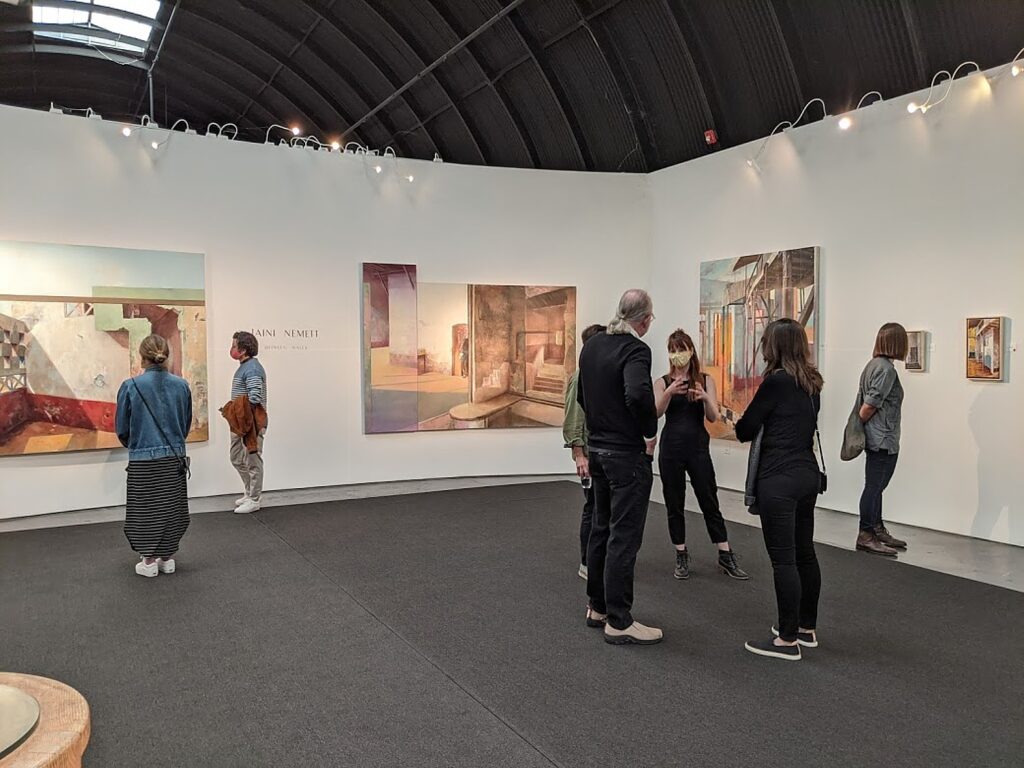
by Karen Rubin, Dave E. Leiberman & Laini Miranda
Travel Features Syndicate, goingplacesfarandnear.com
People are being urged not to travel now as COVID-19 cases are rising, but travelers who show judicious care and act responsibly should be able to continue to take trips, because the travel, tourism and hospitality industry has taken bold steps to keep travelers safe.
We realized we had a window of opportunity to travel to California in October because we take to heart Dr. Fauci’s warning about travel during fall and winter when the weather gets cold (coronavirus lingers longer in cold air), there are fewer opportunities to do meals and congregate outside, and the numbers of infections have spiked, especially in states that have not taken seriously the necessary measures to contract the virus (just as he predicted).
Indeed, the spike in cases as the winter holidays approach, is horrifying and I would avoid traveling at any distance during these concentrated times, especially if travel involves going through states and destinations that have been so cavalier about containing the coronavirus. So we chose our itinerary with great deliberate care and intention, as well as showing the consideration and personal responsibility that all travelers should exercise.
And we are still planning to bike and hike in fall, ski and snowshoe in winter, and looking forward to traveling in spring when I expect a new Biden administration to do a better job of controlling the spread (if 95 percent of Americans would just wear a damn mask, the spread would be contained), when there will be more likelihood of treatments and perhaps even vaccines. (Indeed, RV vacation companies are doing gang-busters business and Tracks & Trails has made Dec. 15 a hard deadline for booking summer 2021 trips.)

It would have been better – and likely tens of thousands of lives would have been saved and millions avoid long-term health issues – if the federal government had been more honest that COVID-19 would be a problem for a year or two, not two weeks or months (“Churches open by Easter!”), because businesses, infrastructure, and families would have made the necessary investments (even just wearing masks and having adequate PPE, while stores, restaurants, schools, offices and factories would have made proper changes), and people would have felt much more confident to get out and about.
The travel industry, facing existential crisis since these are the most face-to-face, people-to-people enterprises (airlines, restaurants and hotels are more than 50% percent down in business and unemployment is epidemic, especially among women who predominant in these fields), has been a model to make the necessary changes.
And that is what we experienced, pretty much going through the entire travel and tourism infrastructure that comprises a long-distance trip: airport, airline, car rental, AirBnB, hotel, restaurant, art gallery, vineyards, bike rental (Laini was disappointed with some elements of the bike rental), tennis, pool. We thoroughly enjoyed all of Sonoma’s delights – vineyards and wine-tastings, hiking along the Pacific Coast, beaches, even taking advantage of outdoor dining at a couple of restaurants, with the piece de resistance, an getaway adventure to Death Valley National Park (great vast open spaces, but still, everyone put their masks up on hikes when coming upon other hikers) which involved AirBnB and hotel accommodations and restaurants.

The point being that both sides of the equation, the travel purveyors (transportation, accommodations, dining, attractions) have to be responsible, but so do the travelers.
That begins with the planning.
We felt comfortable planning a trip to California, a state which was hit early but hard by the coronavirus, but, especially in San Francisco’s environs, has acted very responsibly since and gotten its infection rate down. I frankly wouldn’t have considered going to a place which has been cavalier, even arrogant or dismissive of protecting residents and visitors, politicizing the very notion of public health, and where, sadly, the infection rates are skyrocketing (South Dakota is a key one).
We quarantined ourselves for two weeks before traveling and each of us took COVID-19 tests (readily available in New York State for free) in time to have the results back when we departed.
We chose our flying route – airport and airline – with deliberate care.
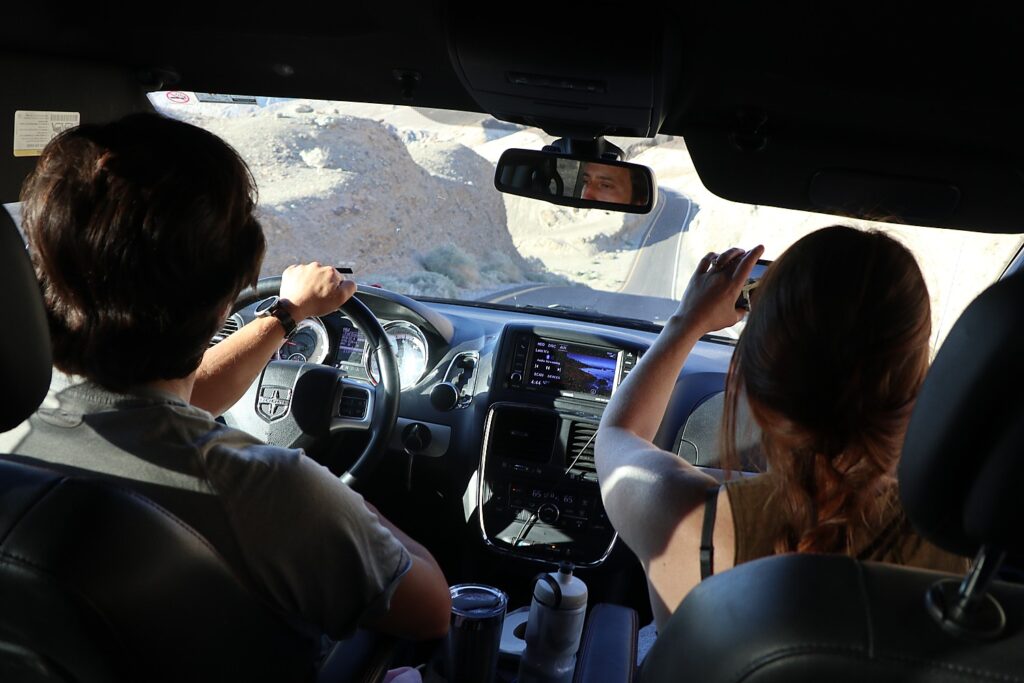
Laini booked a car rental from Dollar which promised COVID-19 sanitizing (the car rentals are connected to the air terminal by AirTrain, which is preferable to a shuttle bus, which was almost empty).
She booked an AirBnB for one night at Death Valley (originally it was for all three nights, but we realized we needed to be inside the park rather than more than half-hour drive outside), and we used hotels.com to book one of the few hotels in the park. She interrogated the Ranch at the Oasis, where we stayed a delightful two nights, to insure that they sanitized the room and left it vacant for 24 hours before the next guest arrived, that we didn’t have to go up in an elevator or go through a lobby, and could dine outside.
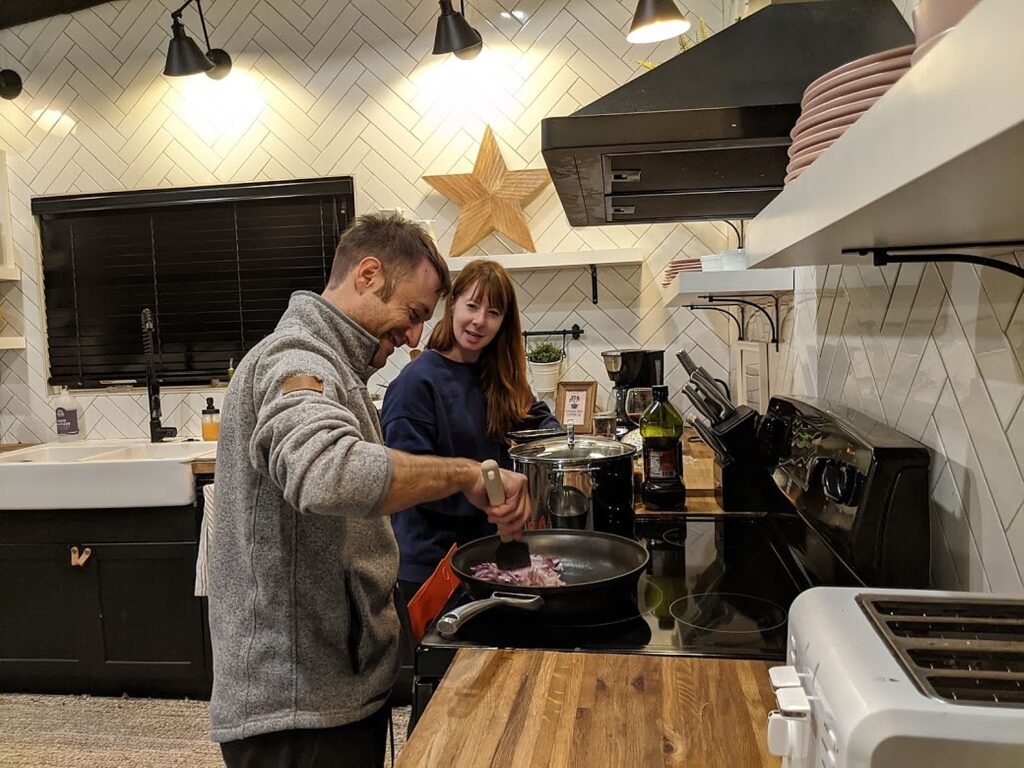
We brought a lot of our own groceries (David baked sour dough bread) to cook dinner at the AirBnB as well as for breakfast and for picnic lunches for the remaining time (they located a popular grocery store, Carroll’s, en route to Death Valley, which had received rave s for its blue-cheese dressing); we ordered take out dinner (espresso rubbed steak!) from the Ranch’s restaurant and ate it on the outdoor terrace one night, and dined on the outdoor patio at the Inn at the Oasis’s fine dining restaurant the next.
The timing of the trip wasn’t just because I considered this a window of opportunity that would be shuttered for six months, but because we had a special event: to attend Laini’s opening of her art exhibit, “Between Walls” (on through December 20) at the Paul Mahder Gallery in Healdsburg (paulmahdergallery.com).

Healdsburg is a wonderfully vibrant town, culturally rich with some 25 art galleries and a food-and-wine haven with marvelous restaurants and 30 wine-tasting rooms (we loved our lunch at Bargas, and our dinner at the H2Hotel restaurant, with gorgeous outdoor seating areas), set around a lovely village square.
Healdsburg, which like Sonoma, depends on tourism, has taken public health precautions very seriously: signs say you will be fined if you don’t wear a mask, and sanitizing stations at the crosswalks. Restaurants are organized for take-out and outdoor dining (space heaters available), menus are either disposable or can be wiped off; the retail stores have sanitizing stations, require masks, limit capacity and kept their doors open for added ventilation. The same for the art galleries.
Indeed, art and wine come together – there is a wine-tasting semi-outside room at the Paul Mahder Gallery (fun fact: it boasts the largest moss wall in America) and the gallery itself is very large, well ventilated, with mask-wearing required.
We had traveled extensively through New York State, camping, hiking (Letchworth State Park, North-South Campground, the Adirondacks), biking rail-trails (Mohawk Trail, the emerging Empire State Trail Network), so were aware of the precautions that were being taken even in outdoor milieus to protect public health.
At each of the places we visited in California, which like New York, has mobilized to contain the coronavirus and, at least in the San Francisco environs, gotten huge buy-in from the community – farmers market, restaurants, galleries, stores – not only sanitizer, mandated mask-wearing, social distancing – and to minimize transactions to reduce in face-to-face interactions.
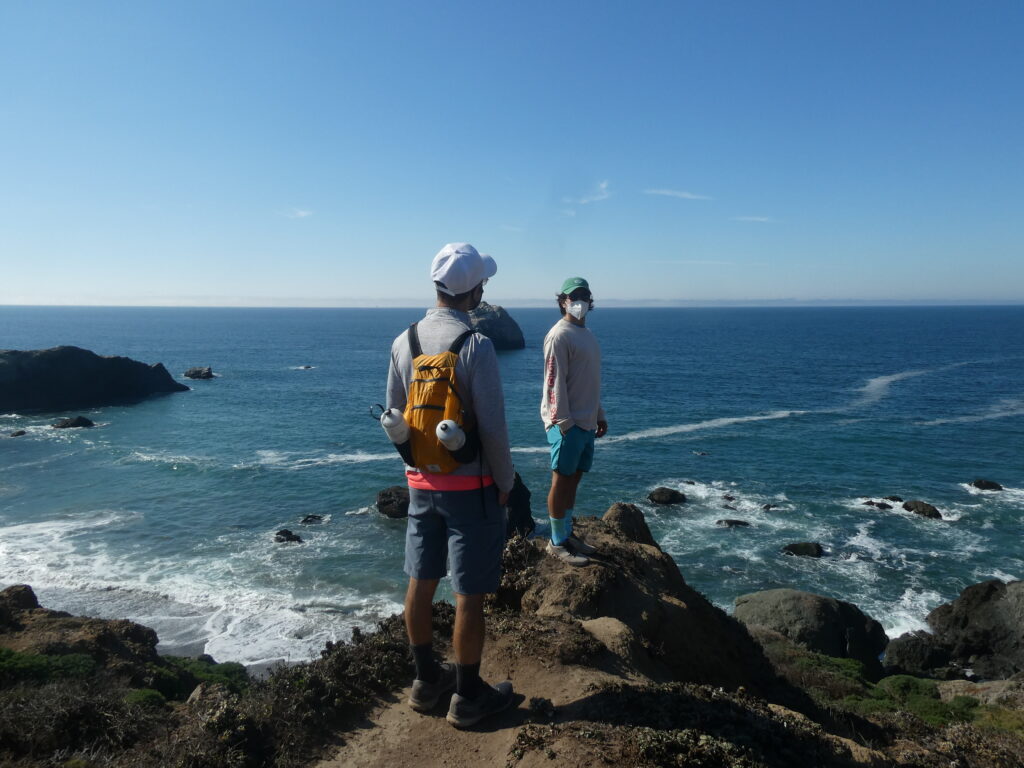
We had hand-sanitizer at the ready for when we had to fill up at gas stations or pick up food.
I felt comfortable booking a stay in a hotel because I have been following the hotel industry’s protocols that have been put into place, because the industry, facing existential crisis, is aware that people have to feel confident to travel.
“Through our Safe Stay initiative, hotels have enhanced our already rigorous cleaning protocols to be more transparent and give travelers even more peace of mind,” said Chip Rogers, president and CEO of the American Hotel & Lodging Association. (See: www.ahla.com/safestay).
We booked our stay at the Ranch at Death Valley over hotels.com (I’m a regular; Laini likes booking.com) – one of two hotels at the Oasis at Death Valley which date back to the beginning of tourism in Death Valley (www.oasisatdeathvalley.com).
Hotels.com states at its website (while also advising travelers to “check government advisories before booking and traveling”), now includes “COVID-19 Hygiene and Cleanliess” list on property pages:
Travel with peace of mind. We’ve made changes to allow hundreds of thousands of properties to add their hygiene and cleanliness details to the Hotels.com site, so you can make the right choice for your stay.
Enhanced health and safety measures
Look out for “COVID-19 Hygiene and Cleanliness” on the property pages to find information on enhanced health and safety, such as:
| Hygiene and Sanitization • Property is cleaned with disinfectant • Commonly touched surfaces are cleaned with disinfectant • Gap period enforced between guest stays | |
| Social distancing • Contactless check-in and check-out available • Shield between guests and staff in main contact areas • Social distancing measures are in place | |
| Essentials at the property • Guests are provided with free hand sanitizer • Masks and gloves are available to guests • Individually wrapped food items available | |
| Official health standards • Property adheres to corporate/organizational sanitization guidelines |
“COVID-19 hygiene and cleanliness measures vary by property. Please check the relevant section of the property pages when searching for your stay.”
Laini went a step further and called the hotel directly to confirm that they sanitize the room and leave it empty for 24 hours before arrival, and chose a room where we didn’t need to go through a lobby or ride up an elevator. The Ranch is a sprawling-style resort with low buildings, rather than one large high-rise. (We were really surprised by the number of guests at the hotel, judging by how full the parking lots were in both the Ranch and the Inn, as well as the number of campers and RVs throughout the park.)
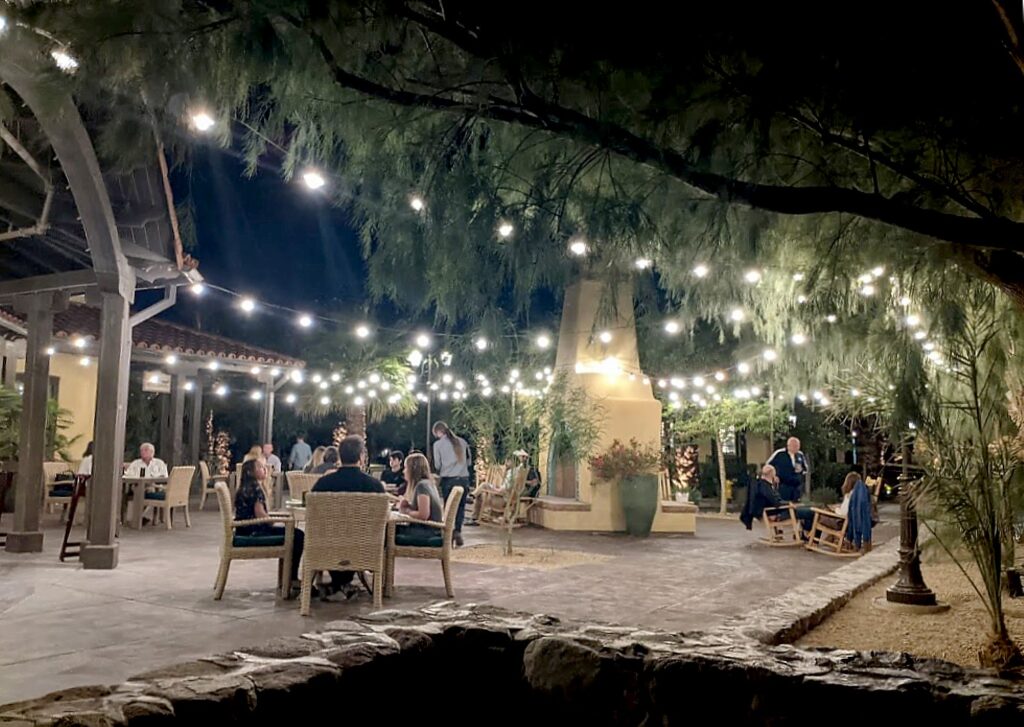
Many destinations (like Hawaii and Maine) had been requiring 14-day quarantine for out-of-state tourists, but now are accepting COVID-19 test results in place of the quarantine. Hawaii is making rapid testing available to visitors. New York State, trying to tamp down a new spike in infections and responding to the surge throughout the country, now requires everyone (including New Yorkers) who have been out of state for more than 24 hours (except for the contiguous states of New Jersey, Connecticut) to get tested before they come back, self-quarantine for three days after arriving in New York, and get a COVID test on the fourth day (otherwise, self-quarantine for 14 days).

Had the federal government been honest and told businesses that the risk would be one or two years, they would have invested in the changes, and public health protocols would have been as accepted and routine as the anti-terror security protocols after 9/11, instead of being politicized and tribal.
Look at Hawaii. As the New York Times reported, instead of quarantine, the islands accept a preflight coronavirus test, processed by specially certified laboratories and trusted testing and travel partners including some airlines.
“Hawaii is at the vanguard of what travel will look like for the next year or so as we reopen,” said Avi Mannis, senior vice president of marketing at Hawaiian Airlines. Hawaiian Air is one of a few airlines that began offering pre-travel Covid-19 tests in October.
“In some markets, especially for international travel, until a vaccine is more widely available, testing will become part of the norm,” said Aaron McMillan, United’s managing director of operations policy and support. “What the data suggests so far is that here in Hawaii, testing has been the key to safely reopening. We now understand the data and the importance of testing. Testing provides a high level of protection for visitors, staff and residents.”
Upon arrival back at Albany airport, we were greeted by National Guardsmen who handed us a form to fill out for contact tracing and notifying us of the self-quarantine and testing requirements.
See also:
Travel in a Time of COVID: We’re Getting on a Jet Plane…
_____________________________
© 2020 Travel Features Syndicate, a division of Workstyles, Inc. All rights reserved. Visit goingplacesfarandnear.com, www.huffingtonpost.com/author/karen-rubin, and travelwritersmagazine.com/TravelFeaturesSyndicate/. Blogging at goingplacesnearandfar.wordpress.com and moralcompasstravel.info. Send comments or questions to FamTravLtr@aol.com. Tweet @TravelFeatures. ‘Like’ us at facebook.com/NewsPhotoFeatures

